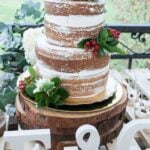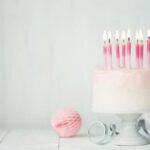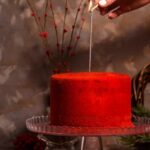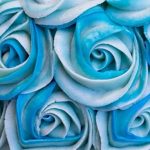Are you looking to learn how to decorate a cake with buttercream icing? Buttercream icing is not only delicious, but it’s also incredibly versatile and the perfect medium for creating stunning cake decorations.
Whether you’re a beginner or an experienced baker, mastering the art of buttercream decoration can take your cakes to the next level. From essential tools and ingredients to different techniques for applying buttercream, this article will guide you through everything you need to know to create beautiful buttercream decorations.
Buttercream icing is a classic choice for decorating cakes due to its creamy texture and ability to hold its shape, making it ideal for piping intricate designs onto cakes. In this article, we’ll explore the essential tools and ingredients needed for decorating with buttercream, as well as tips and tricks for achieving professional-looking results. Preparing the cake for decorating is an important step in ensuring that your buttercream decorations adhere properly and look their best.
Whether you’re looking to achieve smooth, flawless finishes or add texture and visual interest to your cake decorations, there are various techniques you can use with buttercream icing. From traditional piping methods to creating decorative embellishments, we’ll cover everything you need to know about creating stunning designs that will impress any audience. Stay tuned as we dive into the world of buttercream decoration and uncover the secrets behind making your cakes truly stand out.
Essential Tools and Ingredients for Decorating With Buttercream
When it comes to decorating a cake with buttercream icing, having the right tools and ingredients is essential for achieving the best results. Some of the essential tools you will need include a offset spatula for smoothing the icing, piping bags and tips for creating decorative designs, a turntable for easy access to all sides of the cake, and a bench scraper for achieving sharp edges.
Additionally, investing in a good quality stand mixer or hand mixer is important for achieving the right consistency of buttercream.
In terms of ingredients, high-quality unsalted butter is key to achieving a smooth and creamy buttercream icing. You will also need confectioners’ sugar (powdered sugar), pure vanilla extract or other flavorings depending on your preference, and heavy cream or milk to adjust the consistency of the buttercream as needed. Gel food coloring is recommended over liquid food coloring as it won’t affect the consistency of the buttercream.
It’s also important to have a good assortment of decorating tips for creating different textures and designs with your buttercream icing. These can include round tips for outlining and writing, star tips for rosettes and borders, petal tips for creating flowers, and leaf tips for adding foliage to floral designs. With the right tools and ingredients on hand, you’ll be well equipped to create stunning buttercream decorations on your cakes.
Preparing the Cake for Decorating
Before you can begin to decorate a cake with buttercream icing, it’s important to prepare the cake properly. Here are some essential steps to follow:
1. Leveling the Cake: Use a serrated knife or a cake leveler to trim off the domed top of each layer, ensuring that they are completely flat. This will provide a stable base for decorating and prevent any lopsidedness in the finished product.
2. Crumb Coating: Applying a thin layer of buttercream icing to the exterior of the cake, known as a crumb coat, will help seal in any loose crumbs and create a smooth surface for additional decoration.
3. Chilling the Cake: After applying the crumb coat, place the cake in the refrigerator for at least 30 minutes to allow the buttercream to set. This will make it easier to add additional layers of icing and decorations without disturbing the cake’s surface.
By following these essential steps, you can ensure that your cake is ready to be transformed into a work of art with buttercream icing.
4. Filling Layers: If you’re working with a layered cake, consider adding a filling between each layer before applying the crumb coat. Whether it’s fruit preserves, chocolate ganache, or flavored buttercream, this extra step adds both flavor and visual appeal to your finished creation.
Different Techniques for Applying Buttercream Icing
When it comes to decorating a cake with buttercream icing, there are several different techniques that can be used to achieve beautiful and professional-looking results. Whether you’re a beginner or an experienced baker, mastering these techniques will take your cake decorating skills to the next level.
Here are some popular techniques for applying buttercream icing:
1. Smooth Coating: This technique involves applying a thin layer of buttercream to the entire surface of the cake to create a smooth and even base for further decorations. Use a offset spatula to spread the buttercream evenly over the cake, and then use a bench scraper to smooth out any imperfections.
2. Textured Finish: Instead of a smooth finish, you can also create a textured look with buttercream icing. Achieve this by using a small offset spatula or the back of a spoon to create swirls, peaks, or other patterns in the buttercream.
3. Piping: Piping is a versatile technique that allows you to create intricate designs and patterns using a piping bag and various tips. From borders and rosettes to writing and intricate lacework, piping offers endless possibilities for decorating cakes with buttercream.
By mastering these different techniques for applying buttercream icing, you’ll be able to create visually stunning cakes that are sure to impress your friends and family. Practice makes perfect, so don’t hesitate to experiment with different methods until you find what works best for you.
Creating Texture and Visual Interest With Buttercream Decorations
When it comes to decorating a cake with buttercream icing, there are numerous techniques that can be used to create texture and visual interest. One popular method is using different piping tips to achieve various designs and patterns.
For example, a star tip can be used to create rosettes or stars, while a round tip can be used for simple dots or writing. Experimenting with different tips and practicing on parchment paper can help you perfect your piping skills before decorating the actual cake.
Another way to add texture and visual interest to a buttercream decorated cake is by using stencils or molds. Stencils can be placed on the surface of the cake and then gently patted with powdered sugar or cocoa powder to create a design, while molds can be used to create three-dimensional decorations like flowers or leaves. These tools can help you achieve intricate and professional-looking designs on your cake without requiring advanced piping skills.
Additionally, incorporating edible elements such as sprinkles, edible glitter, or even fresh flowers can add another dimension of visual interest to your buttercream decorated cake. Sprinkles and edible glitter can be pressed into the buttercream for added sparkle and color, while carefully placed fresh flowers can create an elegant and natural aesthetic. Just be sure that any non-edible decorations are safe for consumption if being added directly onto the cake.
| Technique | Description |
|---|---|
| Piping Tips | Using different sizes and shapes of piping tips to create various designs such as rosettes, stars, dots, and writing. |
| Stencils and Molds | Using stencils with powdered sugar or cocoa powder, as well as molds for three-dimensional decorations like flowers or leaves. |
| Edible Elements | Incorporating sprinkles, edible glitter, or fresh flowers into the design for added sparkle, color, and elegance. |
Tips and Tricks for Piping Buttercream
Choosing the Right Piping Tips
When it comes to piping buttercream icing, the choice of piping tips can make a big difference in the final look of your cake. For fine details and writing, a small round tip is ideal, while larger round tips are great for creating borders and outlines.
If you want to create beautiful floral designs or intricate patterns, consider using petal or star-shaped tips. It’s also a good idea to have a variety of tip sizes on hand to give you more flexibility in your design options.
Consistency Is Key
Achieving the perfect consistency for your buttercream icing is crucial for successful piping. If the icing is too stiff, it will be difficult to pipe smoothly, and if it’s too soft, it won’t hold its shape.
To ensure the right consistency, add small amounts of liquid (such as milk or cream) to thin out stiff icing, or add powdered sugar to thicken runny icing. Test the consistency by piping a small amount onto a plate – it should hold its shape without being too stiff or too droopy.
Mastering Piping Techniques
Practice makes perfect when it comes to piping buttercream icing. Before decorating your cake, spend some time practicing different piping techniques on a piece of parchment paper or wax paper.
This will help you get a feel for how much pressure to apply to the piping bag and how quickly to move in order to achieve smooth lines and shapes. Remember that it’s okay to make mistakes – just scrape off the icing and try again until you feel confident in your piping skills.
Adding Color and Flavor to Buttercream Icing
One of the most exciting parts of decorating a cake with buttercream icing is the ability to customize the color and flavor of the icing. By adding food coloring and flavor extracts, you can elevate the look and taste of your cake design.
When it comes to adding color, it’s important to use gel or paste food coloring as opposed to liquid food coloring, as it won’t affect the consistency of the buttercream. Start with a small amount of color and gradually add more until you achieve your desired shade.
In addition to color, you can also infuse your buttercream icing with different flavors. Vanilla extract is a classic choice, but you can also experiment with other extracts such as almond, lemon, or even espresso. It’s important to add these extracts gradually while tasting along the way to avoid overpowering the buttercream with too much flavor. Another popular option is adding fruit puree or zest for a natural and refreshing twist.
When it comes to incorporating both color and flavor into your buttercream icing, it’s essential to strike a balance between achieving the desired aesthetic and maintaining a delicious taste. With careful consideration and experimentation, you can create beautiful cakes that not only look stunning but also taste amazing.
| Adding Color | Adding Flavor |
|---|---|
| Gel or paste food coloring | Vanilla extract |
| Gradually add for desired shade | Experiment with almond, lemon, or other extracts |
| Avoid using liquid food coloring | Add fruit puree or zest for natural twist |
Finishing Touches
When it comes to decorating a cake with buttercream icing, the finishing touches can make all the difference in making your creation stand out. From adding final details to ensuring that your cake looks polished and professional, taking the time to perfect the finishing touches will result in a stunning end product. Here are some tips for making your cake stand out with the perfect finishing touches.
Adding Edible Decorations
One way to elevate the look of your buttercream decorated cake is by adding edible decorations. Whether it’s fresh fruit, chocolate shavings, or edible flowers, incorporating these elements can add color, texture, and interest to your design. Remember to choose decorations that complement the flavor of your cake and consider using them strategically to create visual balance and appeal.
Incorporating Additional Flavors
Another way to make your cake stand out is by incorporating additional flavors into the design. Consider adding flavored syrups or drizzles over the top of your buttercream icing for an extra burst of taste. You can also include complementary fillings between cake layers to add depth and dimension to the overall flavor profile of your creation.
Personalizing With a Message or Design
Finally, consider personalizing your cake with a message or customized design. Whether you’re celebrating a special occasion or simply want to add a personal touch, using piping techniques or edible markers to write a message or create a unique design can add sentiment and individuality to your finished product. Just be sure to practice beforehand if you’re new to piping letters or intricate designs on cakes.
Best Practices for Storing and Transporting Buttercream Decorated Cakes
In conclusion, learning how to decorate a cake with buttercream icing can be a fun and rewarding experience. By following the essential tools and ingredients for decorating with buttercream, preparing the cake properly, mastering different techniques for applying buttercream icing, creating texture and visual interest, piping techniques, adding color and flavor, and finally adding the finishing touches can result in a beautifully decorated cake that will impress any guest or customer.
However, it is important to also consider the best practices for storing and transporting buttercream decorated cakes. After putting so much effort into creating a stunning design, it would be disappointing for the cake to be damaged during storage or transportation. By following these best practices, you can ensure that your hard work is preserved until it reaches its intended destination.
By properly storing your buttercream decorated cake in a cool, dry place away from direct sunlight or heat sources, you can help maintain the integrity of the icing decorations. Additionally, when transporting the cake, it is crucial to handle it with care and secure it with appropriate packaging to prevent any shifts or damage during transit.
Ultimately, by paying attention to these best practices for storing and transporting buttercream decorated cakes, you can ensure that your masterpiece arrives in perfect condition and continues to delight all who see it.

Welcome to my blog about home and family. This blog is a place where I will share my thoughts, ideas, and experiences related to these important topics. I am a stay-at-home mom with two young children. I hope you enjoy reading it! and may find some helpful tips and ideas that will make your home and family life even better!





